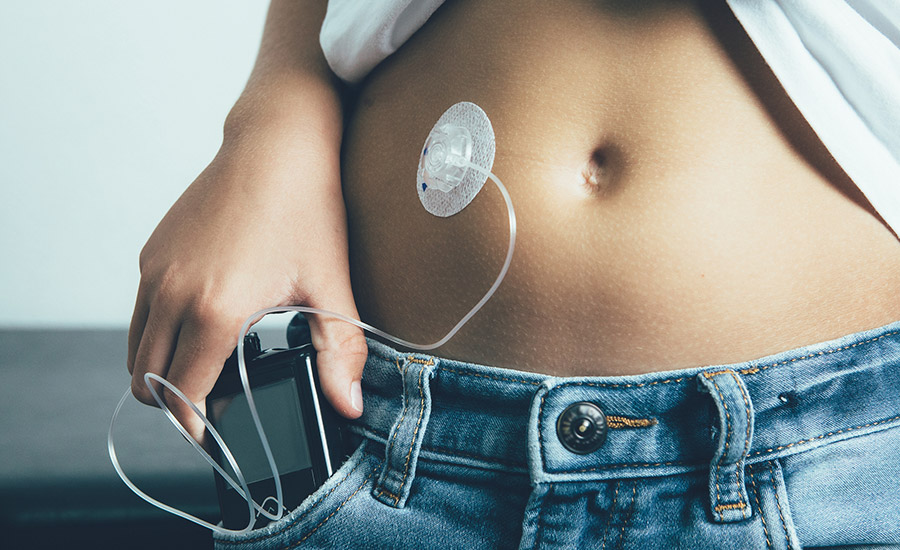Three Silicone Adhesives That Give Your Application the Advantage
By understanding the advantages and disadvantages of silicone PSAs, SSAs, and film adhesives, manufacturers can select the formulation that maximizes component or device success.

martin-dm / E+ via Getty Images
From wound treatment and combination device drug delivery therapies to solar cell assemblies, silicone adhesives in tape or film form can provide strong bonds in the most demanding environments. Selecting the right type of adhesive can help ensure the successful operation of the component or device while maximizing yields and throughput.
Silicone adhesives have been used in aerospace and medical device applications for at least 50 years. This is due to their low modulus compared to other organic-based chemistries. They remain flexible at temperatures as low as -120 °C and withstand high temperatures. However, traditional liquid silicone adhesives can be challenging to work with in these types of applications because they remain liquid until they cure, which can take multiple days in some cases. This poses a challenge when it is important to maintain the bond line thickness.
Alternatives to traditional one- or two-part liquid adhesives are available in other forms, such as pressure-sensitive adhesives, soft silicone adhesives, and two-part film adhesives that are commonly used in similar applications.
Silicone Pressure-Sensitive Adhesives (PSAs)
Silicone PSA formulations are solvent-based, removable adhesives that are non-curing and form a strong bond when pressure is applied. There are many factors that contribute to the amount of time it takes to reach full adhesion with a PSA: the surface wetting, the rheology of the PSA, temperature, and pressure. Additionally, applying a silicone primer can increase the adhesion of the PSA to the substrate.
Silicone PSAs in liquid form can be applied directly to the component itself, a common technique used for prosthetics, wearable devices, and other applications where a tacky PSA provides the adhesion and biocompatibility needed. Considerations when using this method include ensuring the carrier solvent is compatible with the substrate or any additives used.
Not only do silicone PSAs have the ability to wet several types of surfaces, but they can be customized for different properties, including increased thermal stability, refractive indices over 1.4, and tackiness, to name a few. PSA formulations can be designed for a range of tack levels, from slight tack, such as tapes used for masking that can be easily removed, to very tacky formulations that maintain adhesion at high temperatures. PSAs can also be cured via crosslinking, typically with peroxide or platinum catalysts, providing additional cohesive strength at higher temperatures so they will not sag or move. Cured PSAs tend to have lower tack but still maintain adhesion after thermal cycling.
Silicone PSAs can also be designed to meet NASA and ESA outgassing specifications per ASTM E595 testing of 1.0% Total Mass Loss (TML) and 0.1% Collected Volatility Condensable Material (CVCM). Applications where low-outgassing silicone PSAs can be used range from assembly applications, such as bonding solar cells to composite panels on satellites, to electronic applications where fogging or silicone deposition is of concern.
Generally, PSAs come in liquid form, but they can also be converted into tapes or films, allowing for controlled bond line thickness and relatively instant adhesion. Most PSA tapes and films have thin adhesive layers for better adhesion. Carrier substrates can be used to add to the overall bond line thickness while increasing strength and thus creating a multitude of configurations of double-sided or single-sided tapes. Common carrier substrates are films or cloth fabrics as well as thermoplastics, composites, and organic thermosets.
 From PSAs to film adhesives to SSAs, each type of silicone-based adhesive offers unique characteristics.
From PSAs to film adhesives to SSAs, each type of silicone-based adhesive offers unique characteristics.
Tapes and films help reduce processing time and can be cut into shapes to easily apply to a substrate based on its configuration. Many silicone tapes and films are compatible with common cutting techniques such as die cutting, digital knife equipment, and laser cutting. Shapes can range from simple strips or circles to complex geometries that eliminate the need for damming, masking, and staging.
Conversion of the PSA into tapes requires specific equipment and capabilities for large-scale rolls, and converters will have a wide variety of release liners and carriers to choose from. The viscosity and percent solids of the PSA will be a factor in the film thickness and can be adjusted by adding solvent based on what the application requires.
Soft Silicone Adhesives (SSAs)
Like PSAs, soft silicone adhesives (SSAs) are designed to gently adhere to the skin with the application of pressure, making them ideal for wound care, scar management, wearable monitoring devices, and electrocardiogram sensors. SSAs are highly permeable to oxygen and water vapor, which are important factors to facilitate wound healing and reduce redness and scar profile.
 Formulated to detach from the skin more gently than other adhesive chemistries, SSAs are used for wound care, scar management, wearable monitoring devices and medical tape.
Formulated to detach from the skin more gently than other adhesive chemistries, SSAs are used for wound care, scar management, wearable monitoring devices and medical tape.
Formulations are offered in a range of viscosity, hardness, surface tack, cure time, and minimum cure temperature. SSAs are not solvent-based, which simplifies and streamlines the production process by avoiding the necessary measures tied to using solvents. SSAs have lower cohesive strength than PSAs, so they are typically made into thicker adhesive layers and applied to a variety of liners or with reinforcing mesh. Since they are platinum-catalyzed, any materials that come into contact with the silicone while curing should be compatible and not inhibit the cure. This includes fillers (i.e., types of electrically conductive carbon) or some pharmaceutical drugs.
Film Adhesives
Silicone film adhesives are excellent choices for use in applications that require a very strong adhesive bond, low modulus, and broad operating temperature range. Space-grade silicone film adhesives are commonly used in place of liquid adhesives for applications such as satellite solar cell assembly, bonding electronic components to flat vertical surfaces, wire staking, form-in-place gaskets, and stack-ups for adhering layers of composites. They can also be used in medical device applications, including adhering balloons and other device assemblies.
Silicone film adhesives are composed of two parts: the adhesive film sheet and liquid activator. Protective release liners are used to keep the adhesive film clean from debris and are removed at time of use. There are several factors that can be customized with silicone film adhesives: film size and thickness, degree of adhesion, and structural support systems such as mesh or carrier. The activator can also be customized for better adhesion to a desired substrate.
As with the other tapes and films, silicone film adhesives enable users to move parts freely without having to be concerned with disturbing the bond line of the adhesive layer. Additionally, shapes can be cut from the silicone film adhesive to minimize handling during production.
Silicone PSAs, SSAs and film adhesives each offer unique characteristics that benefit specific applications. By understanding the advantages and disadvantages of each, manufacturers can select the formulation that maximizes component or device success.
For additional information, visit www.avantorsciences.com/pages/en/nusil-medical-grade.
References:
National Library of Medicine. The Use of Silicone Adhesives for Scar Reduction. (Online) Available at: https://www.ncbi.nlm.nih.gov/pmc/articles/PMC4486716/.
Looking for a reprint of this article?
From high-res PDFs to custom plaques, order your copy today!




